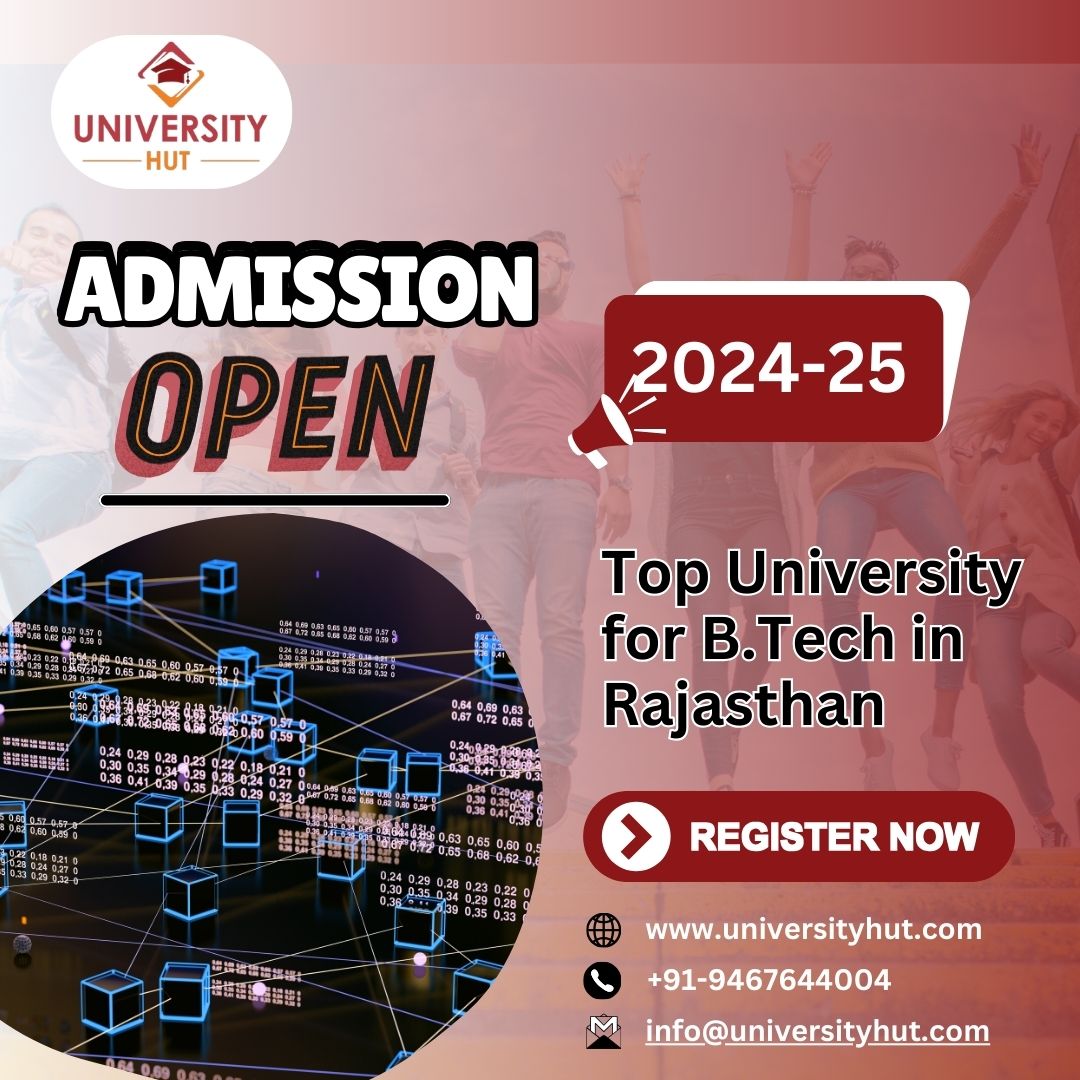Bachelor in Medical Radio Imaging Technology (BMriT) 2024-25
Introduction about Bachelor in Medical Radio Imaging Technology (BMriT) 2024-25
Dev Bhoomi University, Uttarakhand referred by University Hut offers Bachelor's in Medical Radio Imaging Technology (BMrit) 2024-25 is an undergraduate program designed to train professionals in the field of medical imaging and radiology. This program equips students with the knowledge and skills necessary to operate imaging equipment, produce diagnostic images, and contribute to patient care in medical settings. Here's an introduction to BMrit:
Program Overview:
-
Duration:
-
The BMrit program typically spans three to four years, depending on the educational institution and country.
-
Curriculum:
-
The curriculum of BMrit combines theoretical knowledge with practical skills in medical imaging, radiography, and related technologies.
-
Specializations:
-
Some BMrit programs offer specializations or electives in areas such as diagnostic radiography, CT (computed tomography) scanning, MRI (magnetic resonance imaging), and interventional radiography.
-
Clinical Training:
-
Practical training and clinical exposure are integral components of BMrit programs. Students gain hands-on experience in medical imaging procedures under the supervision of experienced professionals.
-
Course Structure:
-
Common subjects in BMrit programs include anatomy, physiology, radiographic techniques, imaging equipment operation, radiation safety, patient care, and medical ethics.
Career Opportunities:
-
Radiologic Technologist:
-
Perform diagnostic imaging procedures, such as X-rays, CT scans, and MRIs, to assist in the diagnosis and treatment of medical conditions.
-
CT Technologist:
-
Specialize in performing computed tomography (CT) scans for detailed cross-sectional images of the body.
-
MRI Technologist:
-
Specialize in operating magnetic resonance imaging (MRI) equipment to produce detailed images of soft tissues.
-
Fluoroscopy Technologist:
-
Work with fluoroscopic imaging, which involves real-time X-ray imaging, often used for procedures like barium studies and angiography.
-
Interventional Radiographer:
-
Assist in minimally invasive procedures, using imaging guidance for tasks such as angioplasty or placing stents.
-
Mammography Technologist:
-
Specialize in breast imaging using mammography equipment for the early detection of breast cancer.
-
Bone Densitometry Technologist:
-
Perform bone density scans to assess bone health and diagnose conditions such as osteoporosis.
-
Radiation Therapy Technologist:
-
Administer radiation therapy to treat cancer patients, working closely with radiation oncologists.
-
Quality Control Specialist:
-
Ensure the quality and safety of medical imaging equipment and procedures.
-
Educator/Trainer:
-
Teach medical imaging techniques and technologies at educational institutions or provide training to healthcare professionals.
-
Radiology Department Manager:
-
Oversee the operations of radiology departments, including staff management and quality assurance.
-
Researcher in Medical Imaging:
-
Engage in research studies to advance medical imaging technologies and practices.
Certifications:
-
BMrit graduates may pursue certifications from professional organizations to enhance their credentials, such as the American Registry of Radiologic Technologists (ARRT) certification.
Note:
-
The actual program content may vary, and it's advisable to check the specific details of the BMrit program offered by the educational institution.
BMrit graduates play a crucial role in the healthcare system by providing essential diagnostic images that contribute to medical decision-making and patient care.
What is the Admission Process for BMLT?
The admission process for a Bachelor in Medical Radio Imaging Technology(BMriT) 2024-25 program depending on the country's education system. However, We can provide you with a general overview of the typical steps involved in the admission process for a BMriT program:
-
Research and Choose Institutions:
-
Research Dev Bhoomi University, Uttarakhand that offers BMriT programs. Consider factors such as accreditation, faculty, facilities, and program curriculum.
-
Check Admission Requirements:
-
Review the admission requirements of the University. Admission criteria can include educational qualifications, academic performance, and sometimes an entrance examination or interview.
-
Educational Qualifications:
-
Candidates are typically required to have completed their secondary education (high school) or an equivalent qualification with a focus on mathematics and physics.
-
Application Form:
-
Obtain the application form from the university admission office or website. Dev Bhoomi University, Uttarakhand allow you to apply both online and physical application form.
-
Submission of Documents:
-
Prepare and submit the required documents, which may include:
-
High school transcripts or equivalent
-
Certificates of completion
-
Proof of identity
-
Passport-sized photographs
-
Letters of recommendation
-
Entrance Examination or Interview :
-
Our university require candidates to give an entrance examination or participate in an interview as part of the admission process. This is often the case for programs with a competitive admission process.
-
Portfolio Submission:
-
The program requires a portfolio submission, compile a collection of your previous work that showcases your interest in planning and design. This could include drawings, sketches, or any relevant projects.
-
Application Fee:
-
Pay the application fee as specified by the institution. This fee is non-refundable and covers the administrative costs of processing your application.
-
Application Review:
-
Once you have submitted your application and all required documents, the institution's admissions committee will review your application. This may include an assessment of your academic records, entrance examination results.
-
Admission Decision:
-
You will receive an admission decision from the institution. If accepted, you will receive further instructions on enrollment, registration, and any additional requirements.
-
Enrollment and Registration:
-
If you accept the offer of admission, complete the enrollment and registration process as instructed by the institution. This may involve submitting additional documents, paying tuition fees, and attending orientation sessions.
What is the Eligibility for BMLT?
The eligibility criteria for a Bachelor's in Medical Radio Imaging Technology (BMrit) 2024-25 program have some general requirements that are commonly associated with admissions to such programs. It's essential to note that the specific eligibility criteria can differ among universities and colleges. Here's a general overview of the eligibility criteria for BMrit:
Educational Qualifications:
-
10+2 or Equivalent:
-
Candidates are typically required to have completed their secondary education (10+2) or an equivalent qualification from a recognized board or educational institution.
-
Stream of Study:
-
The common eligibility stream is often in the field of science with Physics, Chemistry, and Biology/Mathematics as mandatory subjects. Some institutions may also accept candidates from other science-related streams.
Minimum Marks:
-
Aggregate Marks:
-
Many BMrit programs specify a minimum aggregate percentage in the qualifying examination (10+2). The required percentage may vary between institutions.
-
Subject-wise Marks:
-
Some institutions may also specify minimum marks in specific subjects such as Physics, Chemistry, Biology, or Mathematics, depending on the program's focus.
Entrance Exams:
-
Entrance Test:
-
Dev Bhoomi University, Uttarakhand conduct entrance examinations as part of the admission process. Candidates may need to qualify in the entrance test to be eligible for admission.
-
Merit-Based Admission:
-
In some cases, admission may be based on merit, considering the candidate's performance in the qualifying exams. Merit-based admissions may be determined by 10+2 marks.
English Language Proficiency:
-
Non-Native English Speakers:
-
For candidates whose primary language is not English, proof of English language proficiency may be required. This can typically be demonstrated through standardized tests such as IELTS or TOEFL.
Counseling or Interview:
-
Interaction with Admission Panel:
-
Candidates may be required to participate in counseling sessions or interviews as part of the admission process to assess their motivation and suitability for the BMrit program.
What are the Career Opportunities after BMriT?
A Bachelor's in Medical Radio Imaging Technology (BMrit) 2024-25 opens up a range of career opportunities in the field of medical imaging and radiology. Graduates with a BMrit degree play a crucial role in producing high-quality diagnostic images that aid in the diagnosis and treatment of various medical conditions. Here are some potential career paths for individuals with a BMrit degree:
-
Radiologic Technologist:
-
Perform X-rays and other diagnostic imaging procedures to assist in the diagnosis and treatment of medical conditions.
-
Computed Tomography (CT) Technologist:
-
Specialize in performing CT scans to create detailed cross-sectional images of the body.
-
Magnetic Resonance Imaging (MRI) Technologist:
-
Operate MRI scanners to produce detailed images of soft tissues, organs, and joints.
-
Fluoroscopy Technologist:
-
Work with real-time X-ray imaging to visualize the movement of organs and structures during medical procedures.
-
Interventional Radiographer:
-
Assist in minimally invasive procedures, using imaging guidance for tasks such as angiography or placing stents.
-
Mammography Technologist:
-
Specialize in breast imaging using mammography equipment for the early detection of breast cancer.
-
Bone Densitometry Technologist:
-
Perform bone density scans to assess bone health and diagnose conditions such as osteoporosis.
-
Radiation Therapy Technologist:
-
Administer radiation therapy to treat cancer patients, working closely with radiation oncologists.
-
Cardiovascular Technologist:
-
Focus on imaging the heart and blood vessels, assisting in the diagnosis of cardiovascular conditions.
-
Sonographer:
-
Use ultrasound technology to create images of internal body structures, particularly for prenatal care.
-
Radiology Department Manager:
-
Oversee the operations of radiology departments, including staff management, budgeting, and quality assurance.
-
PACS (Picture Archiving and Communication System) Administrator:
-
Manage and maintain digital image storage and communication systems used in radiology.
-
Educator/Trainer:
-
Teach medical imaging techniques and technologies at educational institutions or provide training to healthcare professionals.
-
Researcher in Medical Imaging:
-
Engage in research studies to advance medical imaging technologies and practices.
-
Healthcare Information Management:
-
Manage and analyze health information data using information technology systems in healthcare settings.
-
Quality Control Specialist:
-
Ensure the quality and safety of medical imaging equipment and procedures.
-
Mobile Imaging Technologist:
-
Work in mobile imaging units, providing imaging services in various healthcare settings.
-
Telemedicine Support:
-
Provide remote medical imaging services as part of telemedicine initiatives.
BMrit graduates may also choose to pursue advanced degrees or certifications in specialized areas to further enhance their career prospects and take on leadership roles in medical imaging departments or research. Continuous professional development and staying updated on advancements in medical imaging technology are essential for success in this dynamic field.
 Call Now ! +91-9467644004
Call Now ! +91-9467644004 Email Now info@universityhut.com
Email Now info@universityhut.com












